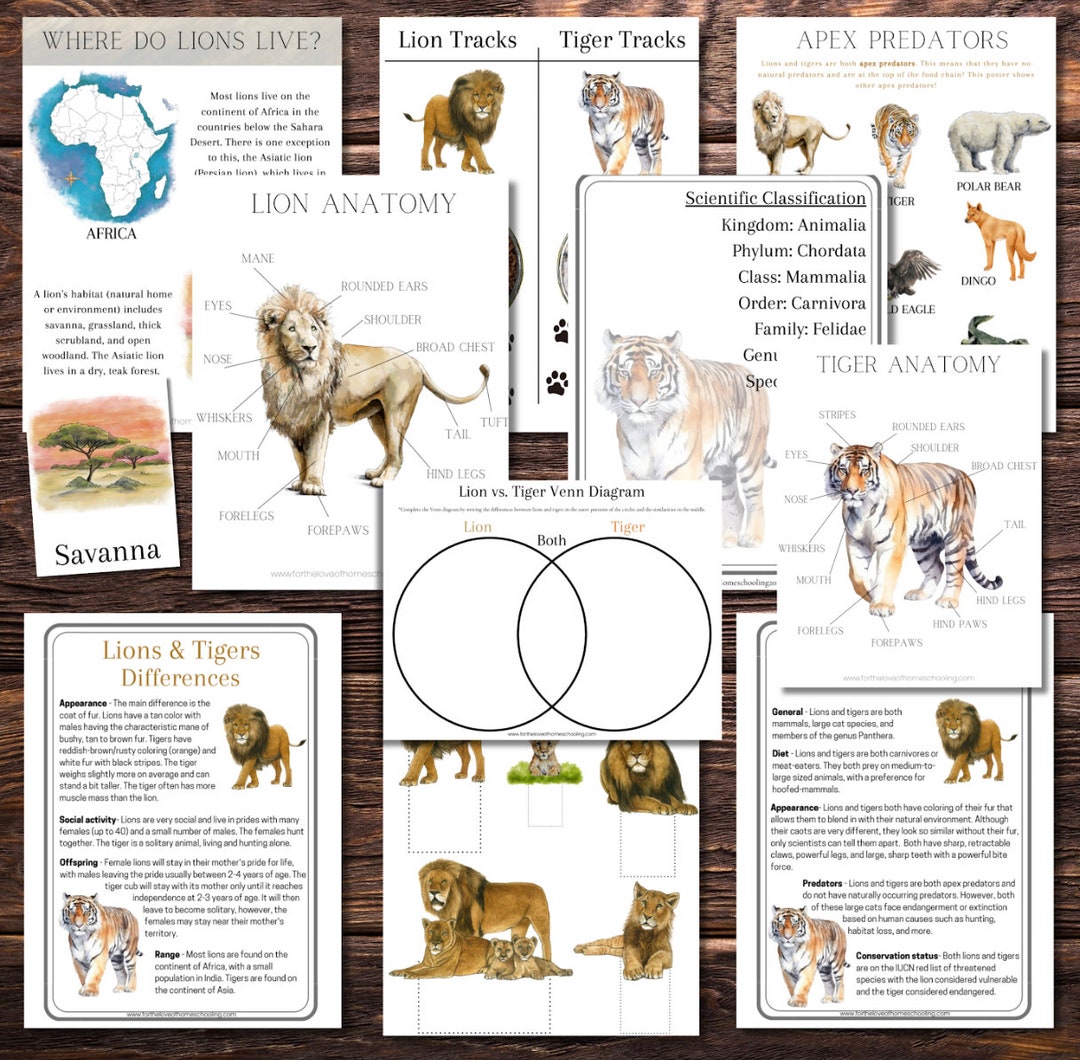Majestic Showdown: Analyzing the Strength and Behavior Gap Between Lions and Tigers


Introduction
Overview of Lions
Lions, often referred to as the “Kings of the Jungle,” symbolize strength and majesty. These social animals live in prides consisting of related females and a few males. Their cooperative hunting strategies and impressive roars resonate through the savannah.
Overview of Tigers
Tigers, in contrast, are solitary and stealthy predators known for their striking orange coats. They inhabit various landscapes, showcasing adaptability. Each tiger has a unique stripe pattern, much like human fingerprints, enhancing their individuality. Both species represent the pinnacle of the big cat family, showcasing remarkable adaptations for survival.

Physical Strength Comparison
Size and Weight
When it comes to size, both lions and tigers hold their own in unique ways. Lions typically weigh between 330 to 550 pounds, whereas tigers can weigh from 220 to 660 pounds, with Siberian tigers being the largest:
- Lions:
- Males: 330-550 pounds
- Females: 265-400 pounds
- Tigers:
- Siberian Males: Up to 660 pounds
- Bengal Males: 400-500 pounds
Bite Force
The bite forces of these majestic creatures further emphasize their physical prowess. Tigers have one of the most powerful bites among big cats, with a force of around 1,000 psi, while lions follow closely with approximately 650 psi. This power aids in subduing large prey.
Claws and Paws Comparison
Both big cats have impressive claws designed for gripping and climbing. However, tigers, with their larger paws, can exert more pressure when striking with their claws. Each paw can deliver a serious blow, making them solitary hunters of formidable prowess.
Understanding these physical attributes gives us a fascinating glimpse into how each species has adapted to survive in the wild.

Behavioral Differences
Social Structure
Delving into the behavioral realm, lions and tigers showcase stark contrasts in social structures. Lions thrive in prides, where familial bonds enhance cooperation.
- Lions:
- Form prides of related females and several males
- Coordinated hunting and nurturing of young
On the flip side, tigers are solitary, valuing independence over social interaction.
Hunting Techniques
Their hunting techniques further exemplify these differences. Lions often apply group tactics, surrounding prey for a coordinated ambush. Meanwhile, tigers rely on stealth and surprise, launching a powerful ambush solo, capitalizing on their exceptional camouflage.
Territorial Behavior
Territorial behavior also varies significantly. Lions uphold sprawling territories, actively marking them with roars and scent markings to ward off intruders. Tigers, on the other hand, practice a more secretive territorial approach, often utilizing scent to communicate boundaries, preferring solitary paths to safeguard their domain.
These behavioral differences not only shape their survival strategies but also influence their roles in the ecosystem.

Natural Habitat and Geographic Distribution
Lions’ Habitat
Transitioning from behavior to habitat, lions primarily inhabit grasslands and savannahs across sub-Saharan Africa. Their preference for open spaces aids their hunting techniques. Here’s a quick look at their environment:
- Typical Habitats:
- Savannas
- Open woodlands
- Grasslands
These settings provide ample prey and visibility for hunting.
Tigers’ Habitat
Tigers, conversely, thrive in denser forests, wetlands, and even mountainous regions. Their adaptability allows them to inhabit diverse ecosystems, from tropical rainforests to boreal forests. Key habitats for tigers include:
- Typical Habitats:
- Tropical rainforests
- Mangroves
- Grasslands
This range supports their stealthy hunting style.
Range and Distribution
In terms of distribution, lions are confined mainly to Africa, with a small population in India. Tigers, however, range across several countries in Asia including India, Russia, and parts of Southeast Asia. This variance highlights the conservation challenges both face, making their habitats crucial for survival. Recognizing these differences helps in understanding their conservation needs and efforts.

Interaction in the Wild
Historical Clashes
Shifting our focus to interactions in the wild, historical clashes between lions and tigers have fascinated researchers for decades. In regions where their habitats overlap, especially in ancient times, encounters could be fierce. Though rare due to differing habitats, when they did clash, it often resulted in fierce competition for dominance.
Mutual Avoidance
Today, however, both species have adapted strategies to avoid conflict. They tend to steer clear of each other, with territorial boundaries carefully respected. Personal stories from wildlife enthusiasts often mention how lions prowling the savannah and tigers navigating dense forests rarely cross paths.
Impact on Prey Population
Moreover, both big cats significantly influence their prey populations. As apex predators, they help maintain a balanced ecosystem. Their presence ensures that prey species such as antelopes or deer are kept in check, ultimately promoting biodiversity in their respective habitats. Observing these interactions not only illuminates their hunting prowess but also underlines their vital roles in nature.




